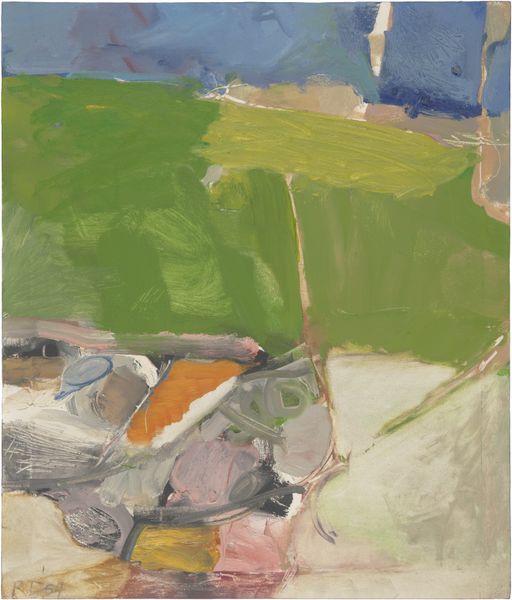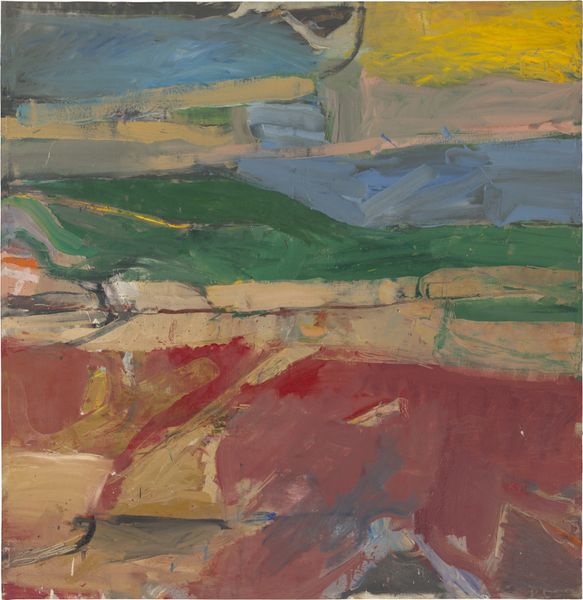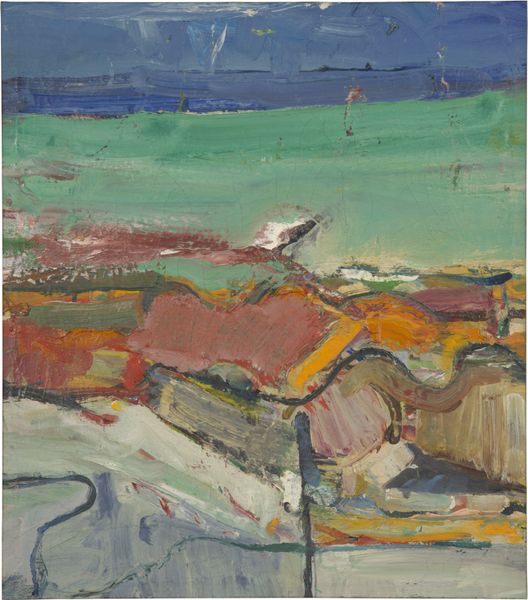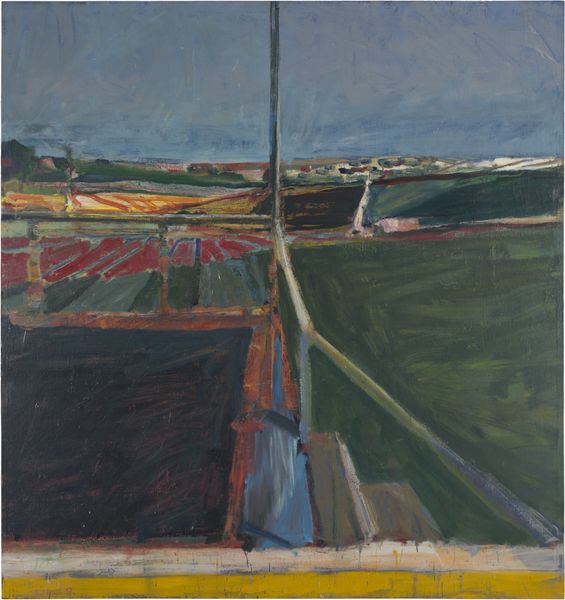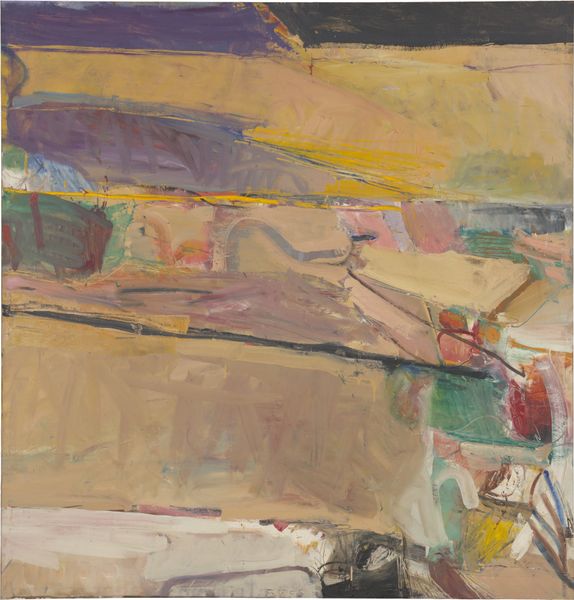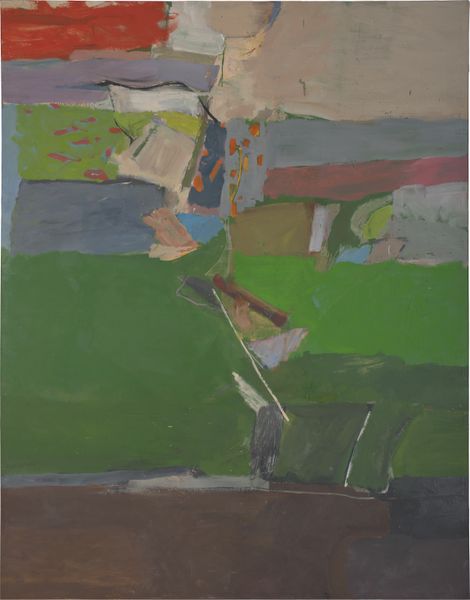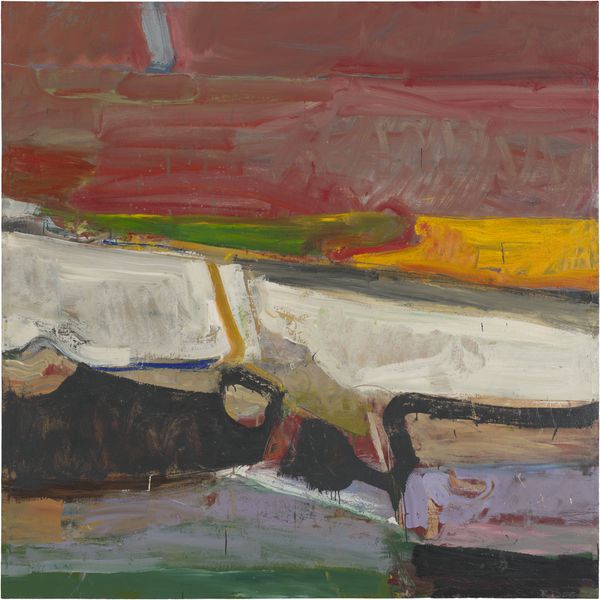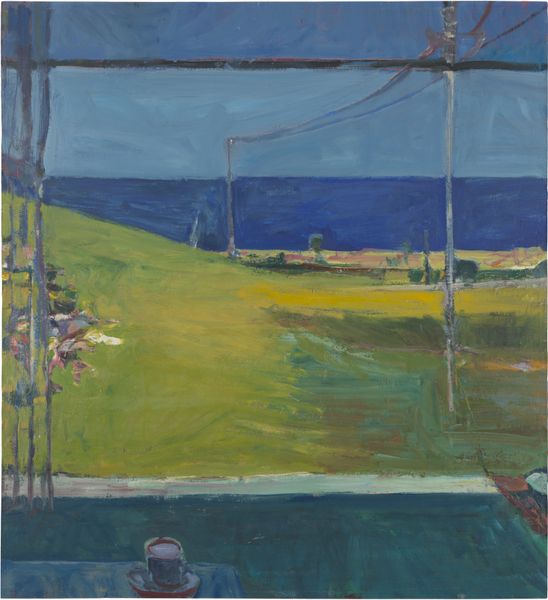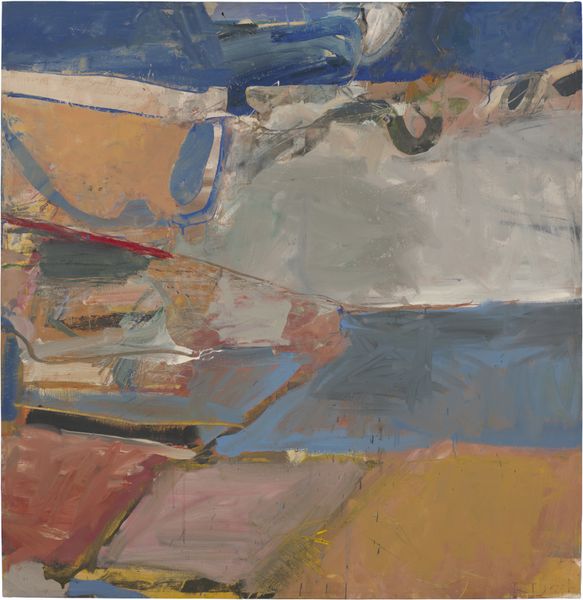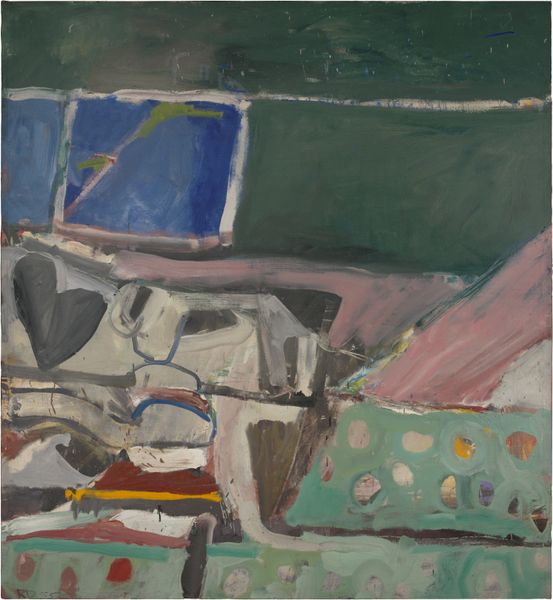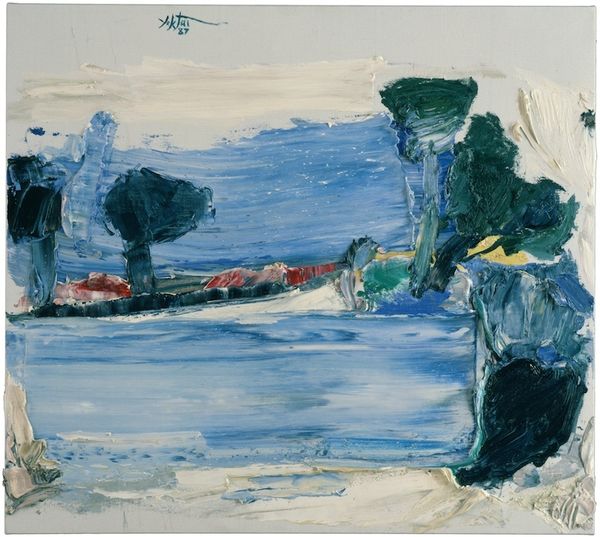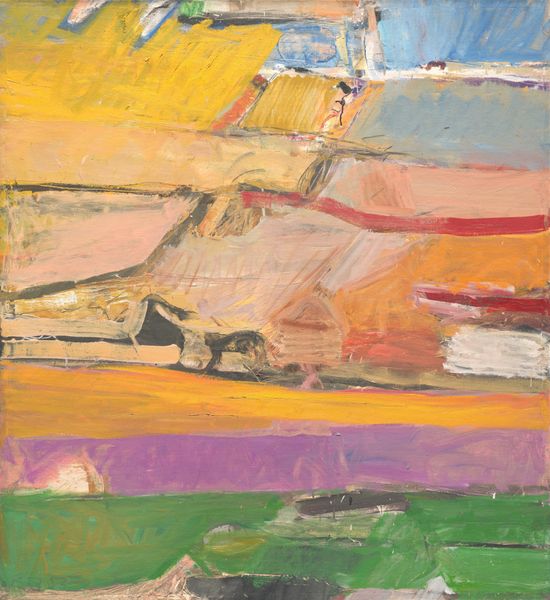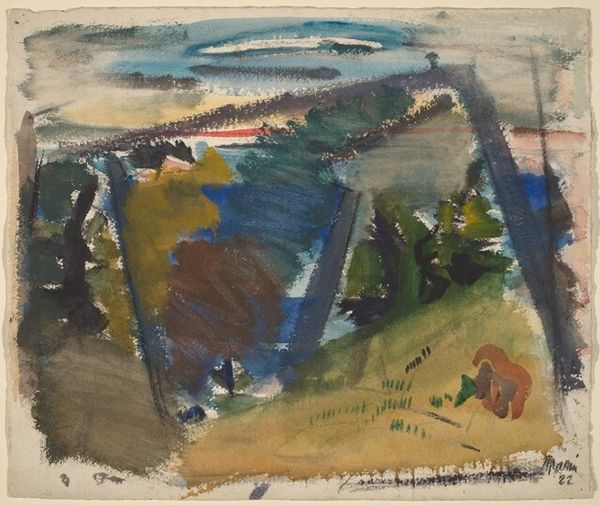
painting, oil-paint
#
abstract-expressionism
#
abstract painting
#
painting
#
oil-paint
#
landscape
#
oil painting
#
bay-area-figurative-movement
#
abstraction
Dimensions: 50.8 x 66 cm
Copyright: Richard Diebenkorn Foundation
Editor: Here we have Richard Diebenkorn's "Seawall" from 1957, created using oil paint. I’m struck by the tension between abstraction and the recognizable landscape. It’s like he's deconstructing the scene before us. What stands out to you? Curator: Immediately, the layering and the sheer physicality of the paint application commands my attention. Diebenkorn wasn't just representing a seawall; he was actively constructing a material object. How do you see the labor involved impacting the meaning of the landscape? Editor: That's a great point! The visible brushstrokes and the thickness of the paint suggest a deliberate, almost laborious process. I guess it makes the landscape feel less romantic and more...built. How does that connect to its historical context? Curator: Consider the post-war period. There’s a shift from the sublime, untouched landscapes of the past to spaces actively reshaped by human intervention, mirroring the anxieties and the aspirations of the time. It shows how nature becomes something consumed and manufactured, doesn't it? The oil itself becomes a key medium connecting industry and artistic production. What does that suggest? Editor: So, it's not just about *seeing* a landscape, but about acknowledging how it’s been manipulated and presented through a specific medium tied to the economy. I’d never thought of landscape art that way before, in terms of materials and social forces. Curator: Exactly. The "Seawall" becomes a powerful symbol of this relationship. We see the process as much as the product. Considering that, is landscape simply "landscape" any more, or is it something very different? Editor: I see what you mean! Thanks. I will never look at a landscape the same way.
Comments
No comments
Be the first to comment and join the conversation on the ultimate creative platform.
